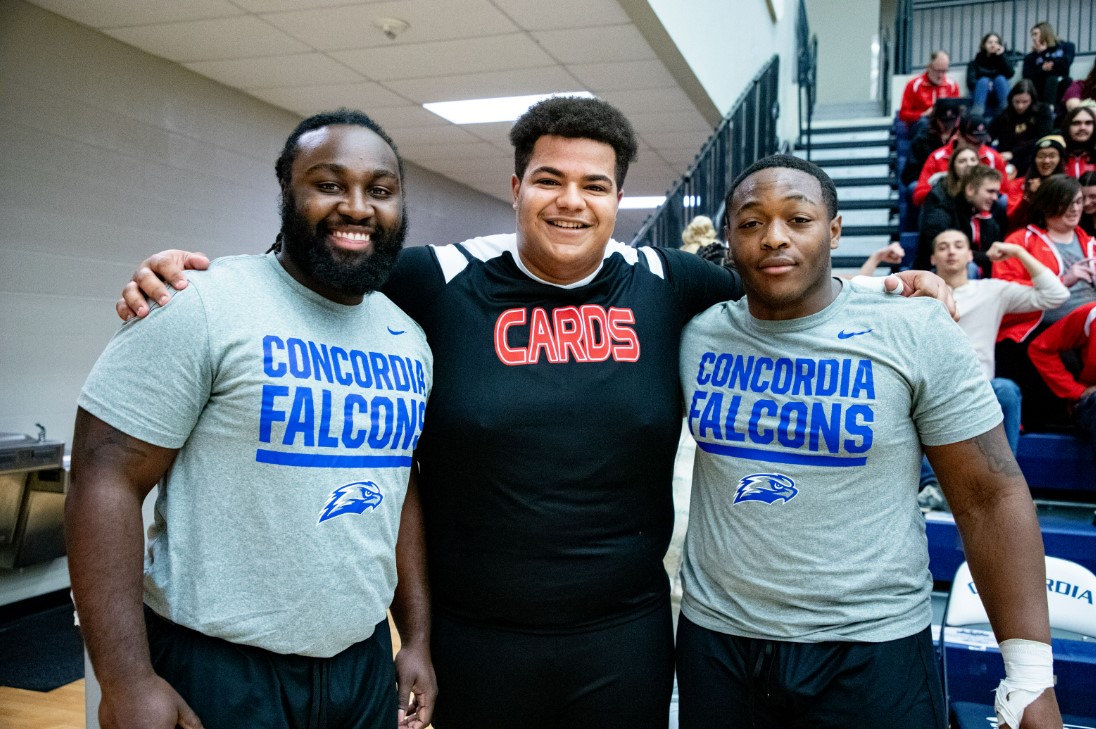
The year 2023 marks 10 years since Concordia University Wisconsin’s merge with Concordia Ann Arbor.
Editor’s note: This story first appeared in the spring 2023 edition of Hearts Together. a publication of Concordia University Wisconsin and Ann Arbor.
It’s a dramatic tale of faithful people who came together to save a school from the brink of extinction.
At its start, Concordia in Ann Arbor, Michigan, existed to honor God and train up students to better serve the Lord throughout the world. The school prospered in its mission for several decades. However, somewhere around the turn of the century its path forward became difficult. By 2010, the institution was on the verge of closure.
But at the same time, the Lord was at work within the hearts of many faithful leaders who could not bear to see Concordia close. It took a collective effort to right the ship because the solution—merging two separate institutions in two separate states—was so Herculean that had one person been the only driver it surely would have failed.
The collective, by God’s grace, prevailed, and in spring 2013, the Higher Learning Commission of the North Central Association approved CUW’s acquisition of CUAA, to be effective July 1, 2013. This completed the final piece of the strategic merger between the two schools.
It has been 10 years since Concordia University, Inc. became “one university with two residential campuses.” To celebrate, some of the champions of the merger gathered on a Zoom call to share a collective oral history of the momentous feat.
Merger leaders on the call
- Rev. Patrick T. Ferry, PhD, president of CUW
- Rev. David Maier, president of The Lutheran Church-Missouri Synod (LCMS) Michigan District
- William Cario, PhD, senior vice president of academics for CUW
- Kenneth Gaschk, senior vice president of enrollment for CUW
- Jim Saalfeld, chairman of the Board of Directors for Michigan Church Extension Fund
- John Bates, CFO at Michigan Church Extension Fund
A pivotal meeting
In November 2011, leaders from CUW, CUAA, Synod, the Michigan District, and Michigan Church Extension Fund met on CUAA’s campus for what has been described as a make-or-break meeting about the future of Concordia Ann Arbor. For more context, read a chronological account of the merge, written by President Emeritus Pat Ferry.
Ferry: Our Board had not made any decisions to merger, so one of the things that we, from the CUW side, recognized was that unless we had a really strong agreement from the people who were in that room then we wouldn’t have anything to bring to our Board. So I felt like everything was kind of hinging on how would our partners, in this case, would join us in stepping up to the challenge. That included Church Extension Fund, Michigan Church Extension Fund, the LCMS, all kinds of folks. So I was cautiously optimistic but I knew without a really strong concurrence, we couldn’t bring it to our Board.
Saalfeld: We had been the primary lender to Concordia Ann Arbor for years and they struggled. We had gone so far as to talk at board meetings about what if? What if it closed, and would the University of Michigan be interested in buying the property, and all sorts of things like that. Going into that meeting I knew that the university was down to its last options, so I was hopeful but I was also concerned because I knew that in order to make it happen we were probably going to have to do something that we almost never ever do and that was forgive some debt.
Bates: God forgives. CEF does not. That’s our tagline. [Laughter] Yeah, we knew it was pretty precarious. We had a first mortgage on, not all the land but most of the land, and if we were just cold-hearted businessmen then probably the simplest thing to do would have been to foreclose and see what we could have gotten off the proceeds of a sale. But as ministry-hearted men, that didn’t seem to be the right direction to go. Now I remember that we knew we were probably going to have to take a little bit of a haircut but we weren’t quite sure what that number was going to be, and in our mind that number wasn’t quite as significant as it was in (Head of Financial Operations at CUW) Al Prochnow’s mind. But Al has a way of negotiating that he makes his point pretty clear, and part of that meeting was him saying, “Here’s the number. Now go huddle with yourselves and come back.”
If we were just cold-hearted businessmen then probably the simplest thing to do would have been to foreclose and see what we could have gotten off the proceeds of a sale. But as ministry-hearted men, that didn’t seem to be the right direction to go.
John Bates, CFO of Michigan Church Extension Fund
Saalfeld: I would just add that I do remember the meeting and the thing I recall is how relatively short it was on the front end. I think we opened it, went around the room and introduced ourselves, and Al just got right to it: “If we’re going to make this happen, these are the things we need.” And he just went down the line to the different entities that were in the room letting them know what they either needed to forgive or what they needed to take on. But again, as John notes, we all wanted the success of the school. We knew we were down to the last options and so it was a big day where we knew this was probably the last chance that this school was going to have.
Ferry: The other part of it was that CUW was going to take on half of all that. And we wanted to know that our partners – extension funds and the districts – were going to meet us halfway, and they did. Not every district was there, so we had to go make some pitches from there, but Michigan (District) led the way.
Dave Maier, he’s on the Mount Rushmore of those who made sure this was going to happen. He was a tremendous leader in that regard, and he encouraged his colleagues from the other districts to step up and do it, and they all did. John used the term haircut. I think we talked about that all morning; who would take a haircut? And it got to be a barber shop in there! Michigan Church Extension Fund, long before we ever got into the conversation, Concordia Ann Arbor would not have succeeded, so they have been collectively the heroes for sure in the story.
Bates: I will add one thing. It really was important to note that the room was filled with godly men who had Kingdom building at heart. It was financial people but it wasn’t strictly a financial decision. So when you think about working with Dave Maier and Pat Ferry and Ken Gaschk, godly men, they all want Kingdom building to happen. It made it a little easier to swallow our pride and accept what we had to accept.
Worth the investment
Maier: I think a lot has been said here. I would completely agree with John that there were godly, spiritual men there. Yes, they had to talk numbers, no question. Even Al (Prochnow), who I’ve come to know as a numbers guy, was very definitely devoted to the Lord. There was just a great spirit there. We knew it was a last chance, last ditch effort. I think Pat said correctly; I think we were talking about $18 million and CUW was going to come up with $9 (million) and everybody else had to come up with the other $9 (million) if we were serious about it.
You talked about a pit in your stomach. Actually I felt better going into the meeting than I did coming out, in a way, because our Council of Presidents meeting was within one week, and I had to then go talk to the English District and Ohio District and Indiana District and Michigan District. I can remember, with some of the other execs there, that we had to go and appear before the Indiana District Board of Directors. Pat, I think you were there too, weren’t you?
Ferry: I attended each of their conventions the following summers. So I had to kind of build on what was started.
Maier: There you go. So this was me and some others at their Board of Directors. It was in Carmel, Indiana. And English District came through. They actually were the first. Dave Stechholz (Bishop/President Emeritus of the English District) was so proud of that. He just wanted to see the school make it, and he’s been a great ambassador for the school. Terry Cripe (president of the Ohio District) was concerned but, man, did they come through also. Indiana, I just talked about them. English that was Stechholz. Michigan, really very thankful for our business manager, Chad, digging deep and coming up with $1.3. The CEF, what a God-send they are! So, altogether, the Holy Spirit was present and working, and it was nice to be along for the ride. Great men!
Maier: Keep this in mind, I had no idea what I was doing. This was nine days into the presidency and I was called down to the Board of Regents meeting with Al Borcherding from St. Louis telling us Ann Arbor was closing. And I talked with the chairman there and I just said, “You know what? Not on our watch. Not on our watch! It is not going to happen. God will not let this happen.” I didn’t know how formative that was. I meant it, but I didn’t know what I was quite saying. But God was good! The Regents rallied there too and really tried to think about what that would mean, but their support and encouragement was immense.
Ferry: As I mentioned “In the Room Where it Happened,” our Board took this question up a few years before the merger occurred and said no. They said no. They were sympathetic but they said we’ve got other things to talk about and think about and that from a business perspective, this was a little iffy and they just said no. And even with that, as we came to the decision finally, the Regents were very much supportive. Dave (Maier) had sent a letter to our Board. (LCMS) President Harrison had sent a letter to our Board. They were able to balance these mission-business questions pretty effectively, but there were a number of members of our Foundation Board who just simply said this is not a good idea. And we lost about a third of them from our Foundation Board because of that.
Maier: I didn’t know that. Pat, let me ask a question: So what was it that the Wisconsin team saw in Ann Arbor? What was it that tipped it in the scales of saying, ‘Okay, let’s go for it.’?
Ferry: I think when we looked at it, we thought, in so many ways, it’s just like what we have going on in Wisconsin, and better in some respects. CUAA had Michigan District and the other districts in that orbit. I mean you had more Lutherans in that region than anywhere else, and we just really believed that, with all due respect, that Ann Arbor was just hanging on because you can’t squeeze blood from a turnip. They were just trying to keep it afloat, but if we could infuse some programs and infuse some ideas–and some of the ones we thought would work did and some of them didn’t. So we just thought we could kind of replicate what we’d done because the demographics and the region seemed to mimic so much of what we’d already experienced. We were always just so surprised that Ann Arbor hadn’t been more successful, but they were just hanging on. There’s only so much you can do. They needed a bit of runway.
To elaborate on what programs didn’t work well. We really felt like adult education was going to take off there. Well, the fact is that it didn’t take off there and it just sunk in Mequon too. We were on the cusp of a changing model. We thought that would work and it didn’t, but other things did.
Gaschk: Well, from my perspective, I went to Concordia (Wisconsin) when it was a two-year school. There were people who talked about “maybe Concordia Milwaukee should close” at the time. And Pat went to St. John’s Winfield, and both of those schools were struggling. But Concordia Wisconsin was given that second chance. And that final chance. And my feeling was, “Look at how the Lord blessed Concordia with that second chance!” I didn’t want to see, if I had anything to do with it, another Concordia close. That was important to me. The impact that Concordia had on my life and on so many other people’s lives, I was going to do whatever I could, whatever small part I could play, to help it be successful.
I never doubted that Concordia Ann Arbor, that we could turn it around. One of the things that I always kept saying was, “I’m coming to Concordia Ann Arbor and I’m looking at it like I’m trying to buy something and go into the store and all the shelves are empty.” Because what happens is so often in higher education we look at “How do we balance the budget right now?” And education is different. You can’t balance the budget by cutting. There’s never been an organization anywhere in the world that has ever cut its way into prosperity.
You have to invest in new products, you have to invest in new things to move forward. I had thought Ann Arbor had cut everything off the shelves that, even the person that wanted to come into Concordia Ann Arbor and look at it, realistically, there was nothing there to buy. So developing those new programs was so important.
The one thing I was always blessed with through all the years I was at Concordia was, Mequon was never shy about starting new programs. I think that was the way I looked at it. I believed that if we started to offer new programs and find different ways to broaden our base– I look at the success of the athletic programs that are at Ann Arbor now. Those things have helped Ann Arbor grow. And the facilities are very important. Higher education is a very competitive market, and I just felt that it was important to do what Mequon did; offer programs, look at programs, and move forward.
Making it work post merger
Cario: I don’t know that there was a point in which I knew that this was going to work. Really from the beginning, higher education is like trying to turn a big ship around. It takes a while. We’re still trying to figure that out in some ways. What’s the balance, say, between athletics and encouraging music? Or, the emphasis that we have discovered has worked on some STEM and health care programs? Those types of things. We’re still trying to figure it out.
Probably the other challenge that we are still working through is what is the relationship between the two campuses academically, as well as in other ways. Of course, with athletics, it made a lot of sense to help keep campus identities separate from each other, and that has worked really well. Our thinking going into this– Pat, do you remember the discussions we had about that phrase: one university, two campuses? That paradoxical-type thing? It’s a good Lutheran way to look at things, but it doesn’t provide the assurance and the surety that, at least some people, have always wanted. Some people on both sides.
There’s always been a pull for the Ann Arbor campus to retain a good sense of autonomy. There’s also a pull from the Mequon campus to standardize. That’s been true on the academic side. Our first step was to align our programs for the sake of efficiency, and that actually cut down a number of Ann Arbor programs to begin with, and then we’ve been able to add programs after that.
There’s always been that tension though. What works in Mequon doesn’t always necessarily work in Ann Arbor, and vice versa. We’re still learning that balance.
Ferry: Talking about heroes, I have to just give so much credit, especially in the early days, to the faculties on both campuses. First of all in Ann Arbor, they changed everything. They changed their calendar, they changed their days, they accommodated every change for the benefit of our efficiencies.
Then on the Mequon side: there could have been a lot of grumbling about this, right? “Oh, we’ve got limited resources. We’re going to have to fit a lot of them into it over there.” But people did not complain. I mean, the faculty at Mequon really embraced this as a mission opportunity. Maybe they talked about it behind my back, but publicly people were very, very positive about it. Now, as Bill was alluding with this, there were lots of growing pains and challenges and trying to figure out how to actually make it work, but the initial response from the faculties on both campuses was just remarkably positive.
Gaschk: You know, I look back at my career and I was blessed to be at Concordia Wisconsin for 37 years, and I look back at the years of working with Ann Arbor and driving back and forth– I think I figured out one year I drove 46 times back and forth to Ann Arbor in one year. I look back at my career and that’s the thing I’m most proud of. The fact that Ann Arbor is still there and that Ann Arbor is doing well and providing workers for the Church, both professionally and in the broader sense. Like I was; I was a business student at Concordia Milwaukee, and there were people at the time who thought that a Concordia shouldn’t offer business as a program, but the Lord has used me in so many different ways in that time.
But the stories are, you know, it was such a team effort. I remember going to the first (LCMS) Youth Gathering we went to as a Concordia Wisconsin-Ann Arbor entity and we were the talk of the Gathering. One thing I was always blessed with was a president who never really held me back at Youth Gatherings, and it was just fun. Some people were worried about the identity of Ann Arbor, but I would tell you, most people were really excited about the fact that Concordia Wisconsin and Concordia Ann Arbor were coming together side by side to advance the Kingdom. And I think that the egos were pretty much put aside.
In all those trips that I would take to Ann Arbor, I would come back to Mequon with an “oh shoot” moment. “What did I just find out about today?” That happened for some time. For example, in maintenance, we went downstairs and there were over 150 refrigerators – and I’m not exaggerating – that were down there because they didn’t want to have to pay the cost to take out the freon that was in the thing, so we had to get rid of 150 refrigerators all at once.
A switch gear, I remember coming over one time and we lost power to the whole campus because a switch gear was literally under water so many times that the bottom of the switch gear rusted out and fell down so now we have no power on campus for a week. Those are the moments that you panic a little bit, but what was so neat about it was how everyone just worked together to figure it out. Those are the fond memories of this thing. You know, I can’t think of a single memory that I have in the whole process where I go, “Boy, I really hated that.” I just loved the fact that we were all working together for the common good and advancing the Church.
Saalfeld: If I could add a point on that. One thing that’s always struck me is what a good chemistry there’s been between the leadership at Concordia Ann Arbor and Concordia Wisconsin and the other entities involved, whether it was Pat (Ferry) or Al Prochnow, Bill (Cario), Roy Peterson, Ryan Peterson, Curt Gielow, Dean Rennicke – I just like talking to these people because they’re fun people to hang out with. I don’t know if God just blessed us in that regard or what, but it’s always been something I’ve noticed that has existed.
Ferry: Another group of people to note. You talk about this marketing challenge. The most important group is the students, and how did they respond to this and how did they react to it? There was one place where all the students came together and that was the Concordia Invitational Tournament. And just before the merger was occurring, the tournament as at Seward.
The Concordia Ann Arbor women had a really good team that year, but Seward’s women are always really good, and I just remember being so moved in that championship game when Seward was playing Ann Arbor and Mequon had a contingent of kids there, and they all got up and they all went over and they sat with the Ann Arbor fans, which was a little bit smaller and they cheered their hearts out the whole game. And Ann Arbor won, so that was even better. So that was one good example of it.
But then, it was maybe a year later after the merger occurred, and it was the men’s game. It was in Ann Arbor. It was a good game against Concordia Wisconsin and Ann Arbor. It was nip and tuck. The fans were standing and cheering. CUW fell behind and all of a sudden the Ann Arbor kids start yelling out – you know, like you do to kind of make fun – “We can’t hear you! We can’t hear you!” And then like a second later the Mequon kids start yelling, “We still own you! We still own you!” They were rubbing it in a little. And that became the cheer every year for a little while. That was a little embarrassing, but I think it was all in good fun ultimately.
And the Strategic Communications and Marketing Department has done a particularly good job of bringing students together in publications and in other ways to really help the wider world appreciate that this is one university with two residential campuses.
Cario: This does raise the issue of apparel of course. I’m wearing blue today, Mequon colors, but people who go back and forth often have to have either a different set of clothing, depending on which campus one was on, or Pat, sometimes at CIT you had some shirts that were purple or half and half and there were those types of things. The vast majority of Concordians still connect with their campus more than Concordia University, Inc. and I think that’s not a bad thing by any means. That’s important but, at least for those of us who do spend significant time going back and forth and spending time on both campuses, there is that reality of a pretty tight working group recognizing differences but seeking common solutions.
Gaschk: I enjoyed that because my wardrobe expanded. It doubled, so it made it easier to get dressed for work!
Change is good
Among the many changes since the 2013 CUWAA merger are several physical improvements to the Ann Arbor campus. Here are some of the significant upgrades, renovations, and additions CUAA has seen in the past decade.
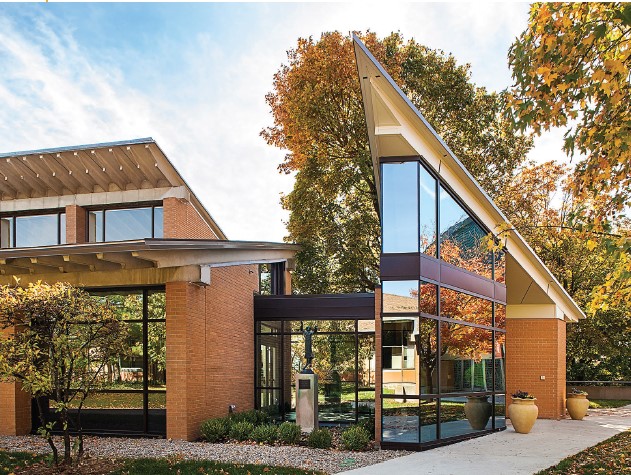
Kreft Center for the Arts renovated (2015)
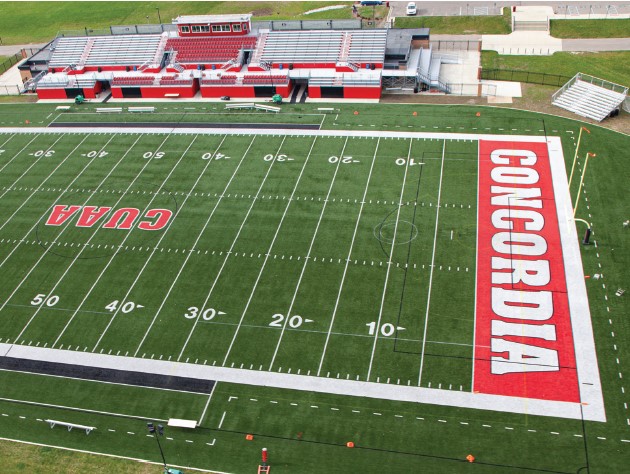
Cardinal Stadium constructed (2015)
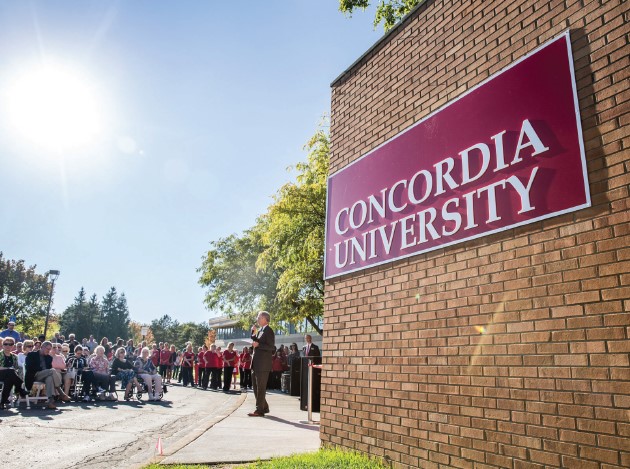
North Building acquired (2016)

Thunder Sports Complex constructed (2018)
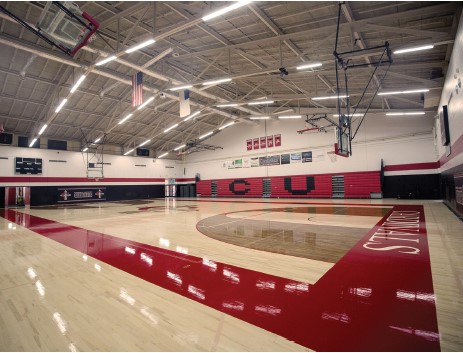
Cardinal Fieldhouse renovated (2019)
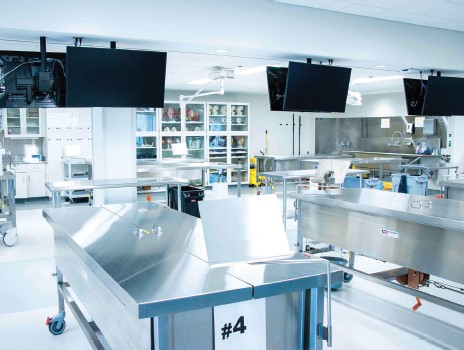
School of Health Professions wing at North Building created (2021)
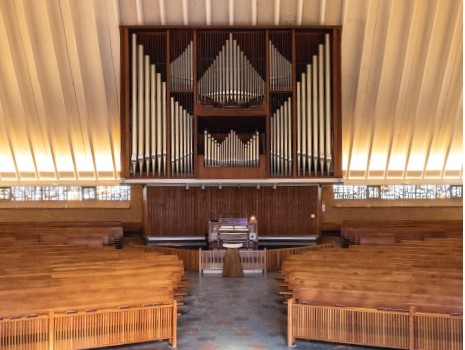
Chapel of the Holy Trinity pipe organ restored (2022)
The alumni perspective
Maier: As an alum, there was a joy in doing this and thankfulness. The university treated me well. I experienced being the first class that had the junior year added on and then we had the senior year added on, so we graduated, our class, with the first four-year degree. And we were blessed. We were just blessed. And the spiritual growth that we experienced was just tremendous, so it was just a part of the excitement and joy.
Cario: There were several of us faculty members on the Mequon campus who had Concordia Ann Arbor ties. Along with me, Randy Ferguson, who was in the Academic Office with me at the time, also was a Concordia Ann Arbor alum. So we did feel like we had a special tie there and a sense of, “We don’t want this to fail. We want to do this right.” It was really strange as a Concordia Wisconsin employee and faculty member going over to Ann Arbor and thinking about and seeing what had happened and contrasting that with my experiences. That was a bit jarring at times to see some of those struggles I hadn’t connected that much. So I wasn’t always aware of some of the challenges, and that encouraged my willingness to put some time into this thing.
Our God, our hope for years to come
Bates: We’re all part of a denomination that faces challenges these days, and to see this situation which was so dire, to see level-headed people come together, put aside whatever differences there were – and there weren’t a lot of differences between Concordia Wisconsin and Ann Arbor – but put those things aside and just work towards a solution that might not be perfect for me, but God-pleasing for the Church at large. And to just press forward to make wise decisions to make those things happen. I mean, there was no guarantee that this was going to work. But work with smart people, seek God’s guidance, and good things can happen. I’m always glad when I see that happening within the denomination. I think there’s more opportunities for that. So maybe there’s a lesson for our denomination to learn from this experience. That’s my takeaway.
Maier: My takeaway is “better together.” You would expect this of God’s people. God’s blessing was upon it, but it took great people. I look at John and Jim, certainly Pat, Bill, and Ken, I just want to say, in the end as I looked at it all, I think getting the money together probably was – no, it was the easier part. Looking at leaders like Pat Ferry, and the quiet Bill Cario that I had known from college – and he still is, but just brilliant too. Ken Gaschk who is just this constant muscle. These were incredible individuals who said, “I’m going to do it for the Lord,” and after the money thing was settled, that’s when the job really began and they did a phenomenal job. And I just want to say thank you to them again. Great courage.
Saalfeld: I would just say, “Anything’s possible with God.” There were lots of prayers put up and the course almost seemed like there was not much hope. I described the scenario that Concordia was in like a plane that was headed down, nose-diving, and it got pulled up at the last minute by the combination of the two universities. I don’t know if anybody really understood fully where this was going to go. Now, you see so many cars on the campus here that they have to park in grassy areas. It’s just like, “Wow, what can’t God do?” This is definitely an example.
Gaschk: I would tell you that I was blessed at Concordia to see God’s hand at work in such neat ways. Concordia Milwaukee was going to build a library on campus and a group of activists got together and blocked Concordia from building this library and tearing down some dilapidated houses that Concordia owned. And we sat back and said, “I don’t get it. Why is this happening?”
Well, shortly after that the Mequon campus became available for sale. The number was astronomical what the School Sisters wanted. The university says, “Great, but we just can’t afford it.” Came back two other times and finally the number came to a number that was doable. Now, Concordia had money because we had just completed this campaign to build this library but now we can’t build the library, so we have all these donors who have committed to this campaign and the Mequon campus becomes available.
People also don’t realize, shortly after that Mequon move, Jeffrey Dahmer was in Milwaukee. That was two and a half blocks away from the old Concordia campus. Marquette University lost about 25% of its enrollment because (they were afraid to live in Marquette campus housing because) of the Jeffrey Dahmer incident. And if Concordia would have still been there, Concordia would not have survived. There is no way, no how Concordia would have survived. So that’s how I saw God’s hand at work the first time.
The second time was with Ann Arbor. Because if we looked at this from a business decision, it made no sense at all. Absolutely none. But I remember looking at people from the Extension Fund and hearing that line: God forgives. The extension Fund doesn’t. That was the mantra that we heard over and over again. And so, I thought, there’s no way this is really going to happen, but we kept moving forward. So here again, God is showing us that he is really in charge.
I look back at this as my greatest achievement in my career at Concordia. I was blessed to be a part of Concordia during a time where I saw the first time we had 300 new students, 400 new students, 500, 600, 700, 8, and even 900 new students. But when I look back, this is the thing that I’m most proud of.
I’m talking about the 90 students on our two campuses who have been baptized into the faith in the last 10 years. The angels in heaven rejoice over that. Even if it was just one, it would have been worth whatever we could have invested in order for that to be made possible.
CUWAA President Emeritus Rev. Pat Ferry, PhD
Ferry: It’s great to be with all of you today. Thank you, all of you, for the part you have played in all this. We’re people of faith and people of faith sometimes need to take a step of faith – or even a leap of faith. In retrospect, what’s the worst thing that could have happened? Well, we all could have lost some money for sure. But look what has happened instead. And I’m not just talking about Ann Arbor’s growth in its enrollment. I’m talking about the 90 students on our two campuses, most of them in Ann Arbor by the way, the 90 students who have been baptized into the faith in the last 10 years. The angels in heaven rejoice over that. Even if it was just one it would have been worth whatever we could have invested in order for that to be made possible.
And it’s not just one, it’s 90, it’s more than that who have grown in their faith and who are having an impact. Ken said it well, Bill and Ken and I have enjoyed lots of things about our time at Concordia Wisconsin – some enormous, historic things, but this one will always be close to our hearts because it’s been such a wonderful experience and I’m truly grateful.
Want in?
Come and see what Concordia University Wisconsin and Ann Arbor has to offer you. Book a visit to either of our campuses to experience an all-inclusive view of student life and to learn more about programs.
The spring 2023 Hearts Together magazine hit mailboxes in April. View a PDF version of the magazine here. If you are not on our mailing list, but are interested in receiving a free copy, email Jennifer.Hackmann@cuaa.edu.